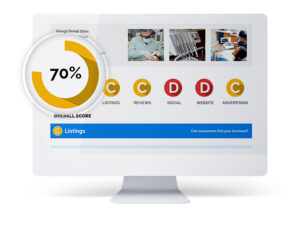Why ChatGPT Gives Different Results for the Same Question
Introduction
At Think Local SEO, we’ve noticed more business owners using ChatGPT to check how they appear online. It’s a smart move. But many get confused when the same question produces two different answers.
If you’ve typed “best plumber near me” or “pest control Forest of Dean” and seen different results a few minutes later, here’s why — and how to use it to your advantage.
Why Answers Differ
ChatGPT doesn’t pull from one fixed list. It searches the live web each time, so results reflect what’s current. These are the main reasons results can change between sessions.
1. Search timing
Search rankings change constantly. If a website updates or gains reviews, it can move up or down within hours. ChatGPT reflects that shift in real time.
2. Server and region
Depending on where ChatGPT thinks you’re searching from, it prioritises results closer to that location. Someone in Lydney and someone in Monmouth can see different lists even if they ask the same thing.
3. Chat history
If you’ve already talked about SEO or local businesses, ChatGPT uses that short-term context to tailor responses. A clean chat gives a more neutral snapshot.
4. Model updates
ChatGPT updates often. Two people can briefly be on slightly different versions, which affects tone, formatting, and sometimes the data sources it pulls from.
5. Randomisation
The system adds a small amount of randomness so replies aren’t identical. This helps it sound natural but also makes minor variations in company order or examples.
How Location Affects ChatGPT’s Results
Many local business owners assume ChatGPT always knows where they are. That’s only partly true.
When ChatGPT knows your location
If your account or browser shares location data, or if you’re using ChatGPT with web access and permissions enabled, it can detect your approximate area (city or region).
In that case, queries like “pest control near me” or “local SEO agency” return results tied to your area.
When ChatGPT doesn’t have location access
If location access is off or you’re using the basic version, ChatGPT won’t know where you are. It can’t infer your town, IP address, or GPS.
In that case, a “near me” search returns generic results or prompts you to specify the area.
What this means for testing visibility
When checking how your business shows up in AI tools:
Always include your target area name in your query.
Example: “best pest control in Forest of Dean.”Use both “near me” and location-specific phrases to compare results.
Run the same test from two accounts or browsers to see location variance.
Keep the phrasing consistent if you’re tracking visibility over time.
Why This Matters for Local Businesses
These changes aren’t errors. They reveal how search engines and AI tools see your business at different times and in different places.
That’s valuable if you’re tracking your online footprint.
You see how your brand name appears on the web.
You notice new competitors entering your market.
You understand how keyword phrasing and geography affect visibility.
ChatGPT works like a snapshot of live visibility, giving you a quick read on how your business appears in search at that moment.
How to Monitor Your Local Keywords in ChatGPT
Use ChatGPT as a keyword monitoring tool to see how visible your business is. Here’s a simple process that works.
Step 1: Build a keyword list
Pick 10 to 15 realistic search phrases your customers would use.
Example:
pest control Forest of Dean
wasp nest removal Lydney
rat exterminator Coleford
BPCA pest controller Gloucestershire
Step 2: Keep queries neutral
Type in phrases naturally, as a customer would.
Use “best pest control near me” not “my business name pest control.”
Step 3: Track what appears
Record who appears for each keyword. Example table:
| Keyword | My business listed? | Competitors shown |
|---|---|---|
| pest control Forest of Dean | Yes | Adam Lott Pest Control, AM Pest Control |
| wasp removal Lydney | No | Forest of Dean Pest Control, Gooch Pest Control |
Step 4: Repeat regularly
Re-run the same checks weekly or monthly. Note any changes in your visibility. More frequent mentions often indicate stronger local SEO performance.
Step 5: Keep the setup consistent
Use the same ChatGPT account and phrasing each time. That removes unnecessary variation and gives clearer trend data.
Quick Tips
Clear previous chats before running tests.
Compare personal and business accounts to see range.
Check at different times of day to capture shifts.
Save screenshots of positive results for tracking progress.
Include location in your query if you want reliable, comparable results.
Final Thoughts
For local business owners, ChatGPT isn’t just a chatbot — it’s a visibility mirror.
Every different result shows how your business appears across regions, times, and search contexts.
Use that insight to guide your SEO, spot gaps, and measure improvement.
At Think Local SEO, we show local businesses how to track their visibility using real data, not guesswork.
Right now, we’re developing a simple keyword tracking process that helps small firms see where they appear in AI and search results.

